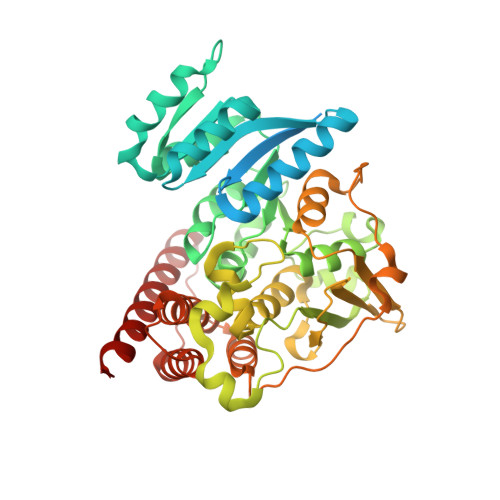Binding Modes of Reverse Fosmidomycin Analogs toward the Antimalarial Target IspC.
Konzuch, S., Umeda, T., Held, J., Hahn, S., Brucher, K., Lienau, C., Behrendt, C.T., Grawert, T., Bacher, A., Illarionov, B., Fischer, M., Mordmuller, B., Tanaka, N., Kurz, T.(2014) J Med Chem 57: 8827-8838
- PubMed: 25254502
- DOI: https://doi.org/10.1021/jm500850y
- Primary Citation of Related Structures:
3WQQ, 3WQR, 3WQS - PubMed Abstract:
1-Deoxy-d-xylulose 5-phosphate reductoisomerase of Plasmodium falciparum (PfIspC, PfDxr), believed to be the rate-limiting enzyme of the nonmevalonate pathway of isoprenoid biosynthesis (MEP pathway), is a clinically validated antimalarial target. The enzyme is efficiently inhibited by the natural product fosmidomycin. To gain new insights into the structure activity relationships of reverse fosmidomycin analogs, several reverse analogs of fosmidomycin were synthesized and biologically evaluated. The 4-methoxyphenyl substituted derivative 2c showed potent inhibition of PfIspC as well as of P. falciparum growth and was more than one order of magnitude more active than fosmidomycin. The binding modes of three new derivatives in complex with PfIspC, reduced nicotinamide adenine dinucleotide phosphate, and Mg(2+) were determined by X-ray structure analysis. Notably, PfIspC selectively binds the S-enantiomers of the study compounds.
Organizational Affiliation:
Institut f¨¹r Pharmazeutische und Medizinische Chemie, Heinrich Heine Universit?t , Universit?tsstr. 1, 40225 D¨¹sseldorf, Germany.

















